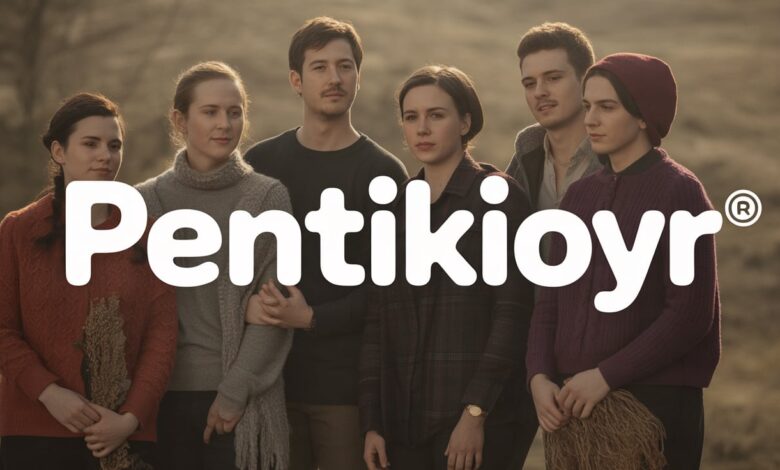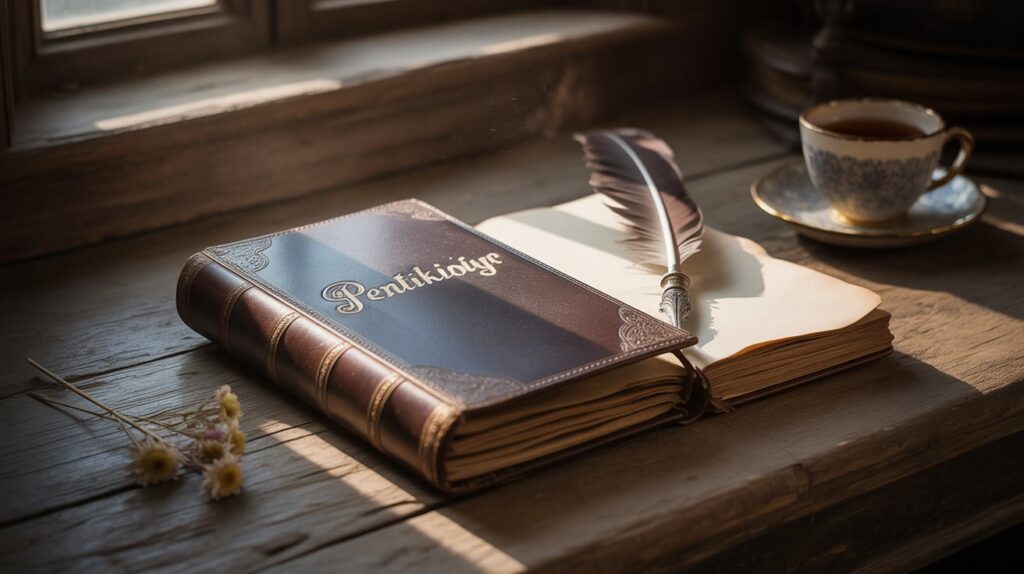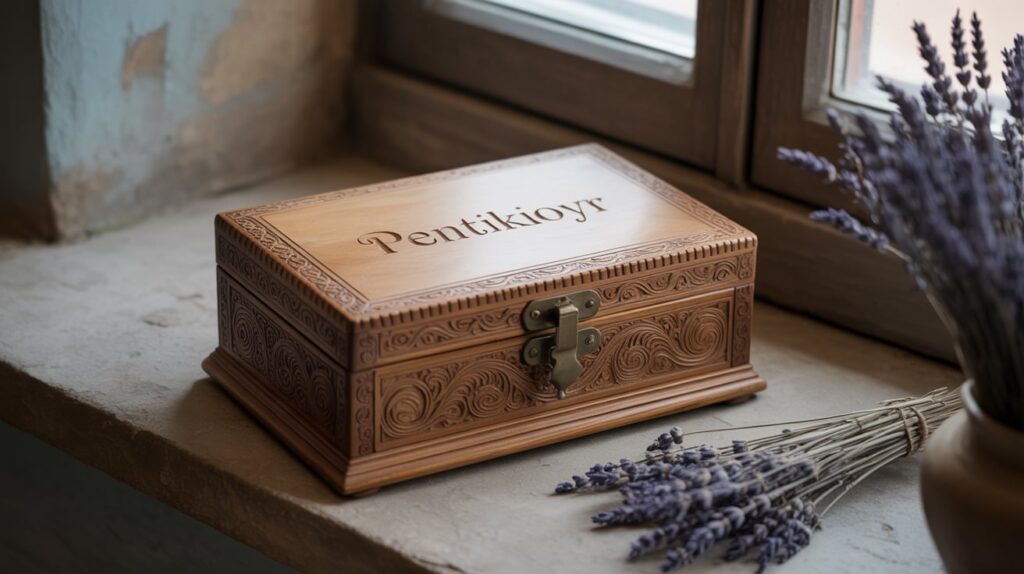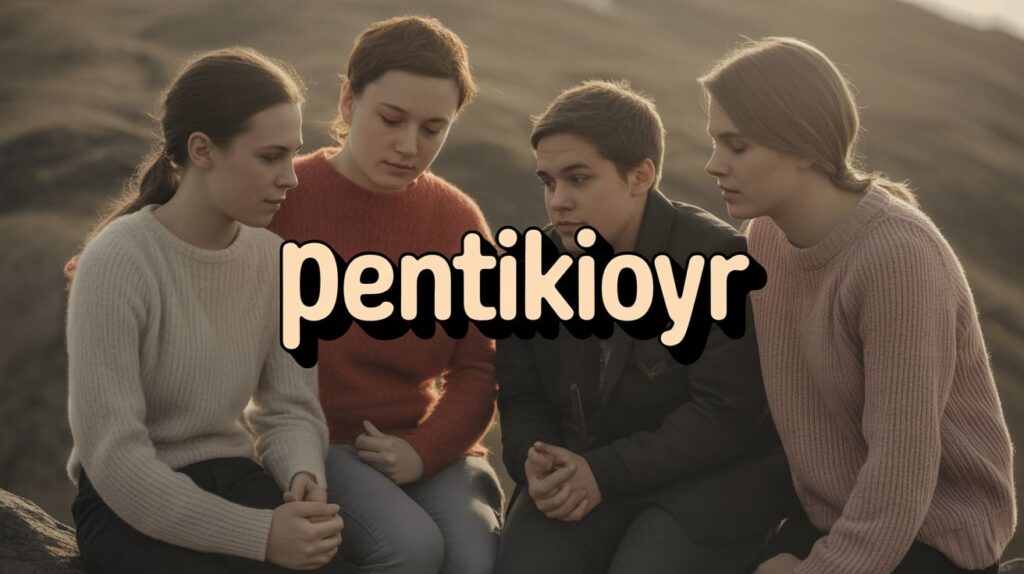Pentikioyr: The Peaceful Word That Connects Past and Present

Think of a word that feels like a small, warm secret in a family. That is how many people treat pentikioyr. It’s a word that sounds old. It also carries a lot of feelings. Some people use it in songs, stories, and rituals. Others use it as a way to remember who they are and where they came from. As of 2025, interest in pentikioyr has grown again. Young people, artists, and scholars all talk about it in new ways.
Why does one little word matter so much? Because words can hold history. They can hold hope. Pentikioyr works like that: it is a kind of key. When someone says it, they often mean more than just the sound. The word can point to a memory, a ritual, or a feeling of belonging. This article will walk you through where the word may have come from, how people used it in the past, and how it shows up in art and stories today.
The origins of the term

Scholars do not all agree on where pentikioyr began. Some say it comes from old dialects used long ago in local tribes. Others think it grew out of folk speech — simple everyday words that gained deeper meaning over time. The true root is unclear, and that mystery is part of what makes the word powerful.
Here’s a simple way to picture it. Imagine a village where stories are told at night. A grandfather pauses and says a small, special word before a tale. Over years, that single pause becomes a sign that something important is coming. That is the kind of origin story people imagine for pentikioyr. The word may have started as a tiny ritual. Then it slowly became a larger cultural sign.
Historical significance — how communities used it
Through history, pentikioyr often showed up around big events. People used it at harvest festivals, at rites of passage, and during communal gatherings. In some places it was spoken to invite good fortune. In others it named an artistic form that mixed music, dance, and poetry. These uses made the word more than a sound — they made it a part of group life.
That history matters because it shows how language ties to action. When a word is used in a ritual, it shapes the ritual. When it’s used in art, it shapes the art. The threads of ceremony, story, and craft all meet at pentikioyr. Knowing this helps us see why people still bring the word into new spaces today.
Oral traditions — stories, elders, and memory
One thing the sources agree on is that pentikioyr lives strongly in oral stories. Elders tell tales by firelight. They whisper the word to children. In these moments the word acts like a bridge. It connects the listener to a bigger story about who they are and what matters.
Think of a scene: a grandmother leans close and tells a child about a hero who used quiet courage. She says pentikioyr at a key moment. The child remembers that sound with the feeling. Over time that memory becomes part of family life. This is how many cultural ideas pass from one generation to the next. The word becomes a small family treasure.
Symbolism and artistic forms

Pentikioyr is not just spoken. It is shown. Artists paint it, sculpt it, and weave it into cloth. Many artworks use spiral or sun-like shapes to hint at the idea behind the word. Some musicians and poets call their works after pentikioyr to tap into its sense of depth and mystery. These art pieces help the word travel beyond the places where it started.
Art makes the term easy to feel, even if you do not know the full meaning. A mural can give you the mood. A song can give you the rhythm. A mask used in dance can show the word’s emotional side. When artists reuse pentikioyr, they let many people touch a shared feeling at once. This is one reason the word keeps showing up in festivals and exhibitions.
Pentikioyr in books, film, and media (short look)
Writers and filmmakers sometimes use pentikioyr as a symbol. In novels it can mean a lost home or a deep change. In films it can appear as a quiet pulse under the story — a hint that something greater is at work. Online creators and indie filmmakers have also picked up the word in recent years. This has helped the idea move from local pages to a wider, even global, audience.
Using pentikioyr in stories is a gentle way to ask big questions. Who are we? What do we remember? What does it mean to belong? These are simple but deep questions. Storytellers use the word to open the door to them. That keeps audiences curious and wanting to learn more.
The spiritual meaning of Pentikioyr
Many people today say that pentikioyr is more than a word — it’s a feeling that touches the spirit. In old traditions, people used it during moments of peace, reflection, or prayer. It reminded them to slow down, breathe, and feel thankful. Even now, that meaning still fits. Life moves fast, and pentikioyr reminds us to pause and connect with our deeper self.
Some call pentikioyr a kind of “energy word.” It helps people feel calm or focused. For example, artists might say it before starting a painting, or teachers might whisper it before a big day. It’s a small sound with a big impact. It’s not magic — it’s more like a quiet reminder that strength often comes from within.
When people use pentikioyr in meditation or daily life, they say it helps them feel centered. It is a word that brings comfort, balance, and sometimes even inspiration. Maybe that’s why it continues to stay alive even in modern times — because it speaks to something everyone understands deep inside.
Pentikioyr in modern culture
In 2025, pentikioyr has made its way into modern art, fashion, and even social media. Some designers use it as a theme in their collections. They say the word represents “rooted beauty” — a mix of old meaning and new creativity. Musicians add it to song titles, poets use it to express calm and unity, and influencers share it in captions about mindfulness and peace.
One interesting trend is how online communities have adopted pentikioyr as a kind of “peace word.” People use hashtags like #pentikioyr under photos of sunsets, cozy rooms, or quiet moments. It’s a soft rebellion against stress and chaos — a small act of choosing peace in a noisy world.
Even schools and workshops have started teaching about pentikioyr. They use it as an example of how words shape culture. Students learn that even a single term can connect people across generations and bring them closer to shared values like hope, gratitude, and peace.
How people connect with Pentikioyr today
If you talk to people from different parts of the world, you’ll find that everyone connects to pentikioyr in their own way. Some treat it as a family word that carries stories. Others see it as a symbol of calm living. For many, it’s part of daily routines — written on journals, worn as jewelry, or used as a gentle reminder to stay kind.
Imagine someone sitting by their window in the morning, holding a warm cup of tea. They say pentikioyr softly to themselves, as if greeting the day with peace. That simple act makes the word feel alive again. It’s these small, personal moments that give the word its true power.
As time moves on, people continue to add new layers to its meaning. What started as a cultural expression has now become a lifestyle idea — one that encourages balance, empathy, and connection.
Why Pentikioyr matters in 2025 and beyond

In our modern world, full of technology and speed, pentikioyr stands for something timeless. It reminds us that inner peace still matters. It’s a bridge between past wisdom and present life. That’s why people keep using it in art, culture, and mindfulness — it helps them feel grounded in an age of constant change.
More than that, pentikioyr reminds us that peace doesn’t need to be complicated. Sometimes it’s found in simple actions — helping a friend, taking a deep breath, or sharing a smile. The word has quietly become a symbol of calm strength.
When we say pentikioyr, we carry a piece of history, emotion, and hope. It links us to our roots, but also pushes us forward with meaning and clarity. That’s what makes it so special — it’s both ancient and fresh, both soft and strong.
Final thoughts
At its heart, pentikioyr is about connection — to others, to ourselves, and to the world around us. It’s a small word with a deep soul. Over time it has become more than language; it’s a feeling, a symbol, and a gentle call for peace.
Maybe that’s why people across the world keep rediscovering it. It doesn’t belong to one place or one culture anymore. It belongs to everyone who believes in kindness, memory, and calm living. So the next time you hear or say pentikioyr, take a moment to feel what it means. You might find it says exactly what your heart already knows.



